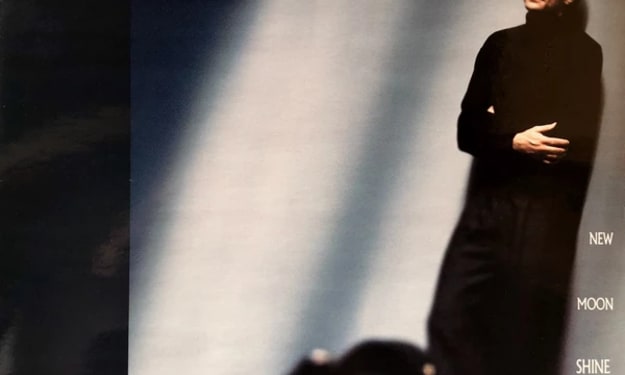'Hourglass'
The culmination of James Taylor's 90s comeback

James Taylor's semi-comeback in the 1990s, which began on 1991's New Moon Shine, reached its climax on 1997's Hourglass. The album was dedicated to Don Grolnick, the producer of Taylor's previous two albums, who had passed away from lymphoma in 1996. Otherwise the band from New Moon Shine was kept pretty much intact, with some key musician's musicians to spice the soup.
Filling Grolnick's producer's role was Frank Fillipetti, who had produced That's Why I'm Here 12 years earlier, with James coproducing. Hourglass was recorded at James's home studio in Martha's Vineyard, with guest spots recorded at Westlake Audio in West Hollywood, California, and Right Track Studios in New York City, and added to the mix.
If Hourglass wasn't earth-shaking in the way albums like Sweet Baby James and JT were on their release, it was certainly the strongest batch of songs Taylor had brought to the table in a long time. Arguably, it may be the most consistently strong studio album Taylor has yet to make, with all tracks of consistently high quality.
The album begins with "Line Em, Up" which begins by recalling Richard Nixon's final moments after resigning the presidency of the United States in 1974. The White House staff lines up in a receiving line in which Nixon shook each staff member's hand before boarding the helicopter that whisked him away into relative obscurity.
According to James the rest of the song is mostly filler, save the last verse, which comments on a mass wedding hosted by the Unification Church at Madison Square Garden in 1985.
The second song on the album is "Enough To Be On Your Way" Which opens with an instrumental passage featuring master cellist and current Taylor neighbor Yo-Yo Ma and fiddle by Mark O' Connor. (Taylor would later return the "guest" favor, appearing on the album Appalachian Journey, which Ma, O'Connor and bassist Edgar Meyer recorded in 1999.)
Lyrically, "Enough To Be On Your Way" was inspired by the alcoholism-related death of James's brother Alex in 1993, with clear references even though James gender-swaps his brother for a woman named Alice. According to James, he wrote the song in his mind while walking around Paris.
In contrast to the darkness of the the album's first two songs is an upbeat number called "A Little More Time With You," a love song that equates James's current love with some of his earlier addictions. The song is highlighted by the unmistakable harmonica playing of Motown legend Stevie Wonder. The song became a fairly sizable adult contemporary hit.
Next up "Gaia," a haunting number that features excellent guest contributions, this time soprano saxophone from Branford Marsalis and acoustic bass by Edgar Meyer. The song is a good example of what James meant when he described the album as "spirituals for agnostics." The song sounds like a prayer for the earth and its many creatures, but James admits in the song that he is "a poor wretched unbeliever".
"Ananas" is an attempt at a bilingual song. To say that it is a far better song than his last attempt at such a song, "Chanson Francaise" on Flag, is a major understatement, although like the earlier song James is using French simply as the language to express love. The song is buoyed by his excellent group of vocalists: Arnold McCuller, David Lasley, Kate Markowitz, and Valerie Carter.
According to Taylor, "Jump Up Behind Me" was inspired by an incident when a young James was stuck on the upper west side of New York City. He called his father Ike to explain his situation; Ike told him to "stay right there, don't leave until you hear from me." Ike rented a car, drove to New York from North Carolina, picked James up and drove him back to North Carolina. According to James, how you get from that story to the song is a mystery. Nevertheless, the song is a classic, featuring Michael Brecker on electronic wind insturment, Carlos Vega on cajon, and Gordon Sumner, aka Sting, on backing vocals.
"Another Day" is a life-affirming song that provides another showcase for Yo-Yo Ma on cello. Carlos Vega uses brushes on the drums and Edgar Meyer provides the musical arrangement, as he does on several tracks.
"Up Er Mei" is inspired by James and his by-now adult children's visit to the Er Mei Mountain in China. It's a very tuneful arrangement and a very basic account of "walking in paradise."
"Up From Your Life" is another "spiritual for agnostics" featuring the soprano saxophone of Branford Marsalis. It's lyrics relate that though for all we know there might not be a divine purpose for our lives, we can still make our own meaning and find fulfillment in our lives.
"Yellow and Rose" is an upbeat song about Botany Bay, where the dregs of British society were brought and where they proceeded to build the nation of Australia. The song features Shawn Colvin on backing vocals and Dan Dugmore on pedal steel, and features a driving drum beat from Carlos Vega and prominent harmonica from Taylor.
"Boatman" is a song written by James's brother Livingston, who wrote it in tribute to their father Ike, soon after he passed away. James does a properly respectful version, making this one of the album's highlights.
"Walkin' My Baby Back Home" is a cover of a song written in 1930 by Roy Turk and Fred Ahlert and probably most associated with Nat King Cole, though his version was recorded more than 20 years after the song was written. The song points to a few standards that James contributed to movies in future years and most directly to the 2020 American Standard album.
You would think that was the end of a classic album--but wait, there's more. An annoying habit of artists in the 1990s was having a hidden uncredited bonus track at the tail end of a CD usually with soundless moments trailing the end of the album proper. On Hourglass, James fell in line with this regrettable practice and this album is no exception with the soundless interval segueing to the western sounding "Hangnail" (aka "Money O Money"). On this excellent album, as was the case with most albums of this time period, the uncredited track is not worth the wait. It would have been better to have let the album end properly.
Hourglass was a major commercial success, making it to number 9 on the Billboard charts and winning the Grammy Award for best pop album--James's first Grammy award since JT in 1977. Hourglass also won Filipetti a Grammy for best engineered album. On a personal note, it quickly became the favorite album of then -7 year old Sean Callaghan.
Sadly, Hourglass would be the last album to feature drummer Carlos Vega who died by suicide in 1998 shortly before he was expected to go on tour with James. Following the album, fans would have to wait five years for its follow-up, October Road. Indeed, from this point on Taylor studio albums would be few and far between.
About the Creator
Sean Callaghan
Neurodivergent, Writer, Drummer, Singer, Percussionist, Star Wars and Disney Devotee.






Comments
There are no comments for this story
Be the first to respond and start the conversation.